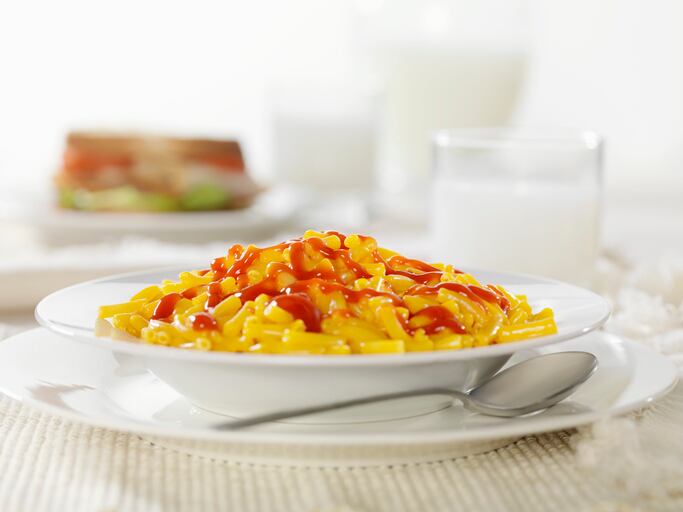“Throughout the pandemic, consumers re-discovered our brands because of an unprecedented change in their lives. As we look to another moment of uncertainty with heightened inflation, we believe the insights and connections we developed with consumers will deliver on needs for them as they face rising prices everywhere in their lives,” Kraft Heinz CEO Miguel Patrico told investment analysts yesterday during the company’s first quarter earnings call.
For example, he said, “as consumers face the pinch at the pump and in other parts of their lives, the functional benefits of a real snack, like Lunchables, or a family favorite grilled cheese with Kraft Singles will continue to be a powerful value option without families having to trade on kids’ taste appeal.”
But to build on the inherent value already baked into many of the company’s products, Kraft Heinz going forward will further draw on its marketing capabilities to elevate its proposition through product innovation, assortments and promotions, channel mix and omni-channel communications, he said.
And to do this, Kraft Heinz is partnering with outside organizations to explore new ways of producing food and marketing its products more effectively and efficiently.
Reimaging food production
To enhance food production at a time when resources, including ingredients and labor are increasingly expensive and valuable, the company is partnering with Microsoft to leverage machine learning and advanced analytics to accelerate innovations and reinforce the supply chain so that it is more efficient, Patrico said, noting this partnership is part of Kraft Heinz’s AGILE@SCALE approach, announced earlier this year.
“We are building a tech ecosystem to create end-to-end capabilities with leading tech companies to accelerate our solutions, to capture more efficiencies and create a significant competitive advantage,” executive vice president of the North American Zone Carlos Abrams-Rivera explained.
“I’m very pleased with the partnership we have with Microsoft because it’s going to allow us to also look at things like areas and planning in manufacturing, in logistics and sales & marketing that allows us to get closer to consumers and making sure we actually are getting real-time information so that improve the customer service by improving forecast accuracy and speed, and that it generates end-to-end efficiencies with new processes, tools and structure,” he added.
These partnerships also go beyond just technology, noted Patrico.
For example, he said, the company entered a joint venture with TheNotCompany to develop plant-based versions of co-branded products. It also partnered with Simplot to boost production capacity of the Ore-Ida brand.
“Our partnership strategy is both practical and forward-thinking. It gives our company a competitive advantage and allows us to leap ahead of our peers in the development of our capabilities,” Patrico said, adding, “The alliances we have forged are building Kraft Heinz into a stronger and faster company that can deliver continuous business improvement, and effectively leverage our scale to maximize value.”
Reinventing Kraft Heinz’ approach to marketing
Kraft Heinz is also teaming with some unexpected partners to reinvent its approach to marketing and better leverage earned media with the goal of moving “at the speed of culture and more deeply [engaging] our consumers,” Patrico said.
Among the companies with which Kraft Heinz is partnering to enhance its marketing are Google, Lytics and LiveRamp, with which it is creating a platform to consolidate its first party data, including more than 400 attributes across 32 billion consumer records.
This is powering what Patrico called the “Kraft-O-Matic insights generator,” which allows the company to better identify consumer needs and “deliver personalization at scale” through its content creation studio dubbed The Kitchen.
“This artificial intelligence-powered asset creation enables us to create more than 500 customizations of a single marketing assets,” Patrico said.
Examples of the new marketing strategy include dropping an 8-foot Velveeta box in the place where a high-profile solid gold cube sculpture sat in New York’s Central Park.
“This precisely timed and culturally-relevant move captured consumer media attention and won consumer approval, generating over 200 million media impressions,” Patrico said, adding that this is the type of agile advertising the company will leverage more in the future.
To capture and reinforce earned media, the company has invested about $100m more in marketing since 2019, Abrams-Rivera said.
However, more important than the investment is the return, which he stressed is more impactful because it is now more personalized and creative.
Investment in marketing and new product innovation along with increase price realization and other strategies are already paying off as illustrated by Kraft Heinz strong first quarter in which organic net sales grew 6.8% over the same period last year and at a compound annual growth rate of 5.3% from pre-pandemic levels in the first quarter of 2019.
With improved organic net sales growth offsetting higher inflation, Kraft Heinz raised its expectations for the year to include mid single-digit organic net sales growth from a previous expectation of low-single-digits.

